Coupling a Bessel Beam and Damaging Nanowires
by Daniel M. Todd
Supervisor: Dr. Carlos Trallero
Kansas State University Physics Department REU Program


Home Research Results About Me
Research
This
summer, I had the fortune of participating in two projects: one concerning
coupling a Bessel beam through a fiber while the other was concerned with producing
single-crystalline gold nanowires to use in studying damage thresholds of those
nanowires.
Axicon Project:
This project focuses on answering the
question of whether or not we can improve the transmission efficiency of light
through a hollow-core fiber by using a Bessel beam. When a standard (Gaussian) laser beam passes
through one of these fibers, it leaves the fiber as a Bessel beam but with
significantly reduced power. We hope
that by using a special optical lens called an Axicon, can we turn the Gaussian
beam into a Bessel beam prior to the fiber and then pass it through the fiber
with less loss of light.
Objectives:
·
Generate Bessel
beam with Axicon
·
Propagate Bessel
beam through hollow core fiber
·
Characterize the
Bessel beam by fitting a spatial mode

This image demonstrates the overarching
purpose of the project: we want to make
the transmission of light through the fiber as efficient as possible so that we
can produce high-energy, few-cycle pulses rather than lower-energy, many-cycle
pulses.

Here is a good representation of what the
Axicon lens does: it takes a Gaussian beam (left) and refracts the light in
such a way to make the trademark design of the Bessel beam in the near-field
(middle). This design is composed of an
intense central mode surrounded by concentric rings of increasing radius and
decreasing intensity. In the far-field
(right), a Bessel beam takes on the shape of a single ring as all of the
central modes quickly drop in intensity.

This Axicon setup is used to generate an
approximation of a Bessel beam by passing a Gaussian beam through the Axicon
lens. This setup uses a 15mW Helium-Neon
laser with wavelength 632.8nm. The
neutral density filter is used to control the intensity of the initial beam and
the telescope is used to widen the beam into the Axicon. The 500mm lens is used to focus the beam so
that it can fit into the 250 micron opening of the hollow core fiber.
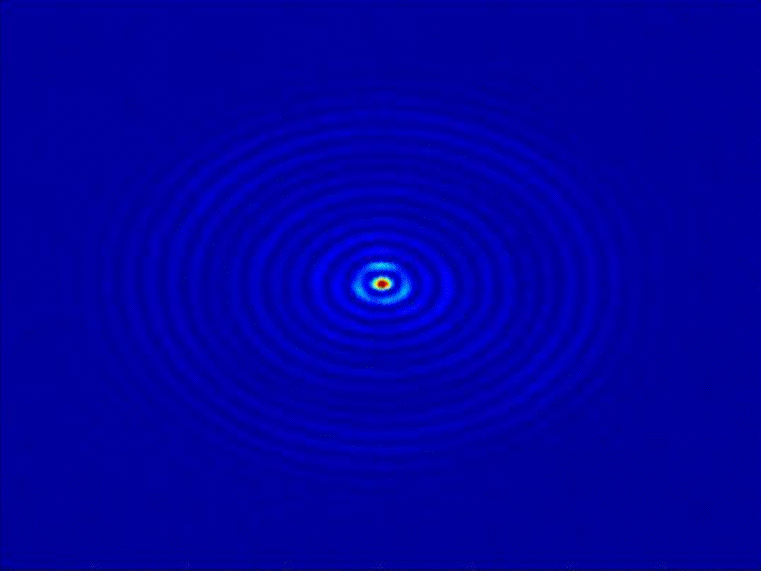
This is an example of our experimental data:
this false-color image of the mode of our produced Bessel beam was taken at a
distance of 190mm away from the Axicon.
*Note: This image was taken during a slightly
different setup than seen above. Rather
than a 500mm lens, there is a 100mm lens and the position of the lens and
Axicon are switched. The Axicon receives
the laser beam first, then at 100mm away, the 100mm lens focuses the beam down
to what we see here.
Nanowire Project
I was able to work with graduate student Adam
Summers and help him with his current study focused on finding the damage
thresholds for single-crystalline gold nanowires. We want to expand his initial
experiment to study the effects on damage threshold of:
·
Polarization
·
Wavelength
·
Pulse duration
·
Other metals
But to do this, it requires the fabrication
of many single-crystalline gold nanowires.
Objectives:
Grow gold (Au) nanowires on glass slides
Study damage threshold of Au nanowires
Long wavelength and few-cycle pulses
Control polarization of electric field
relative to crystal axis
Overall, I was able to produce multiple gold
(Au) electrodes on glass. The image on
the lower left is a prototype slide I used for tracing slices I had to make in
the material, and was made with the Solidworks CAD
software. The final design as seen in the lower right provided up to 20
electrode gaps (100 μm average)
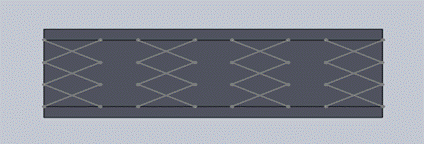
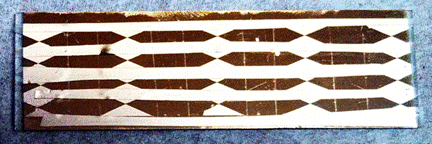
How I prepared the Electrode slides:
·
Placed tape on
methanol-cleaned slides
·
Sliced tape along
lines, removed pieces
·
Evaporated
Chromium, then Gold onto slides
o
Used a Varian
VE-10 Evaporator
·
Removed remaining
tape to reveal electrode gaps
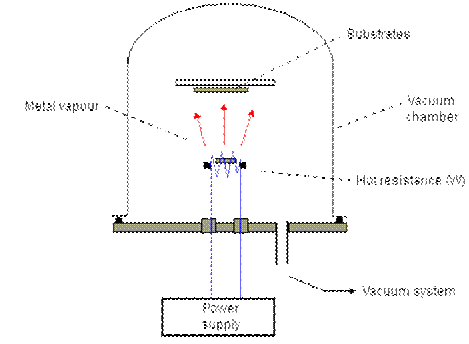
The above image demonstrates how the Varian
VE-10 evaporator (or metal deposition machine works). After placing the desired metals in wires
baskets, a current is run across the wire under vacuum to heat the metals very
quickly. The metals evaporate upward
onto downward-facing slides and the metal sticks and solidifies on the cool
surface of the slide. We do this first
with chromium then again with gold in order ensure the gold will stick to the
slide.
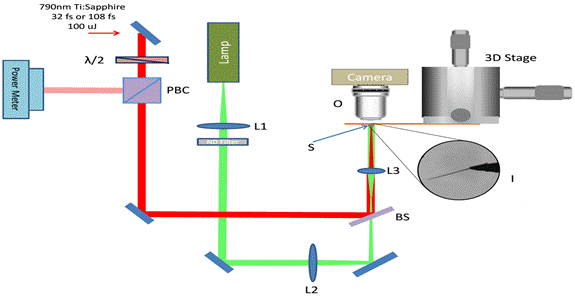
The Nanowire Setup is used to focus a
high-intensity beam onto an Au nanowire in order to observe damaging
intensities. The lamp structure provides
an adjustable backlight to view the nanowire.
The laser setup can adjust intensity using the half-wave plate and
polarizing beam cube combination and focuses the 32 or 108 fs pulse onto the
nanowire. In my proposed experiment,
there would be another half-wave plate just prior to L3 in order to change the
polarization of the electric field with respect to the nanowire.